It is very common for painters of icons to copy the work of the great masters of the past, and Kiko Arguello, a founder of the Neocatechumenal Way, is no exception. Here are several icons, including seven associated with the Dodekaorton, which were painted by Kiko. Each one was copied extensively from the work of other artists such as Theophanes of Crete, the famous fifteenth century Russian artist Andrei Rublev, or the fourteenth century artist Theophanes the Greek.
Theophanis Strelitzas, also known as Theophanes the Cretan (“of Crete“) or “Theophanes Bathas”, was a leading icon painter of the Cretan school in the first half of the sixteenth century, and was the most significant figure in Greek wall-painting of that time. Read more about him…
Andrei Rublev, born in the first half of the fourteenth century and a Russian Orthodox saint, was considered to the best medieval Russian Orthodox painter of icons. Read more about him…
Theophanes the Greek was born around 1340 and was known as the mentor of Andrei Rublev. He is also considered to have influenced the Russian Novgorod school of iconography. Read more about him…
Most of the elements of Kiko’s “Last Judgment” fresco were taken from a work done by the Novgorod school in fifteenth century Russia. Click here to read more about that.
Click on the images below to enlarge. Kiko’s are on the left, and those of the earlier artists are on the right.
Much of Kiko’s iconography cannot be said to be original. We should ask then:
1) Does Kiko ever cite the work of these masters that he copied when he talks about his work?
2) Why cannot the work of Rublev or one of the other traditional artists that Kiko copies be used in the communities? Why must it be Kiko’s work, and his work alone that is used?
| Kiko Arguello | Earlier Artist |
|
|
Neocatecumenal, Kiko Arguello
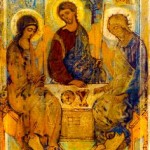
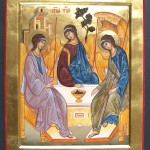
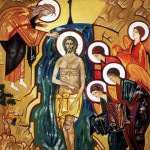
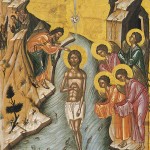
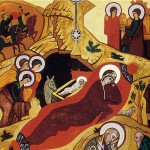
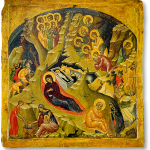
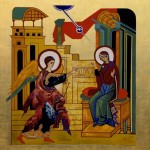
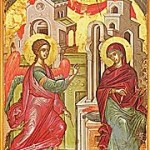
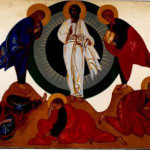
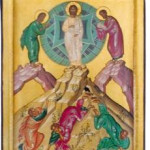
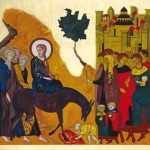
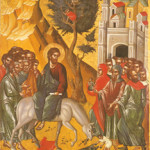
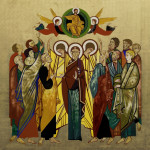
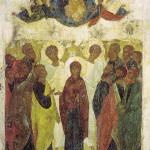
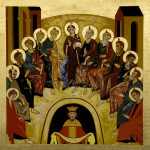
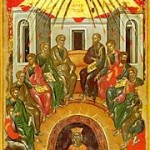
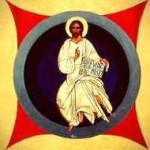
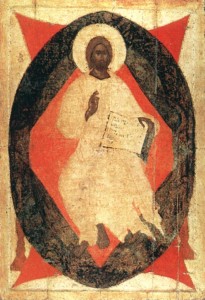
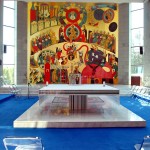
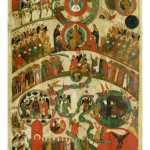
You may want to have a better look at Kiko’s variations.
Kiko’s “Holy Family” represents himself as Christ (Kiko always draws his face in place of Christ!), cofounder Carmen Hernàndez on the left, and fr. Pezzi on the right. Kiko adds the “bread” on the table, as if it was in the Old Testament.
In Kiko’s “Annunciation”, the “triple ray” (Trinity) becomes a “single ray” (no Trinity!) in Kiko’s paintings.
[another Annunciation]
Kiko’s “Nativity” is “flipped” (why?!) and the rays from the Heaven almost disappear. Also, the three Magi kings in Teophane’s painting “just found” Jesus, while in Kiko’s painting they “did not find yet”. Also note the women ready to wash the Baby – and Jesus is blessing the water. In Kiko’s painting this does not happen, and the water is abandoned and black! Why?!?
Kiko’s “religious” paintings feature a number of eerie details, like “black eyes” (devilish!), “blessing with the left hand” (!!), the cross symbol “upside down” (devilish!!).
Thank you for your insights and also for the links to your detailed posts on the subtle differences. I will certainly study them too. The “black eyes” that Kiko sometimes paints have always bothered me, now I know why.
I am very interested in Kiko’s “Last Judgment” fresco, and I notice that he has essentially copied the version produced by the fifteenth century Novgorod school in Russia. Have you analyzed the differences in Kiko’s version? Perhaps any differences may suggest some deformations in Kiko’s eschatology.
Thanks again.
I have answered my own question about Kiko’s Last Judgment fresco. See Kiko’s Judgments .
I think you misunderstood what an icon really is – icons are not just paintings but a lot more. If a painter paints an icon, he musn’t paint what he likes to paint. He have to follow certain rules (canons) and these rules were defined by the church itself. Why? Because icons as already said are not just painting, what they really are is an expression of our faith! The content of an icon is theological and cathectic. Therefore they “look all the same”: if you are a good painter the icon will look better and if you are bad painter the icon will look worse, but the pattern will still the same.
What Kiko is really doing here is much more. He is building a bridge between the catholic and orthodox church with his art. He is doing an ecumenical work, this is a gift for the church and we should be grateful for that. Pope JPII also spoke about the importance of the icons for an ecumenical dialogue with the eastern orthodox church, please see the apostolic letter Duodecimum Saeculum.
I understand icons, M.. What I don’t understand is why only Kiko’s work is allowed to be used by communities of the Neocatechumenal Way. My question extends to his music too. Why the cult of personality?
Where are the black eyes? I can’t see them.
You can’t see the black eyes on the Baby Jesus? Look at the figures in the lower left corner!
I wonder whether these are really frescos. Kiko does not have the time needed to paint fresco. I think they are acrylics. Fresco is painted with waterolours on a layer of freshly mixed sand and lime, and the mix does not stay humid long enough, so on a finished painting you can see where the painter had to stop.
I know very little about it, but I am an enthusiast, and so I actually wrote about it 😀 …..
Ana, perhaps you are right. Kiko does have a team of artists who work with him, so time would not be a factor. What would you call this painting, that takes up an entire wall in his Israel palace?
I can´t stop laughing…
Please! I can´t believe it.
What can’t you believe?
All glory and honor goes to Kiko. He relishes every moment. Pathetic.